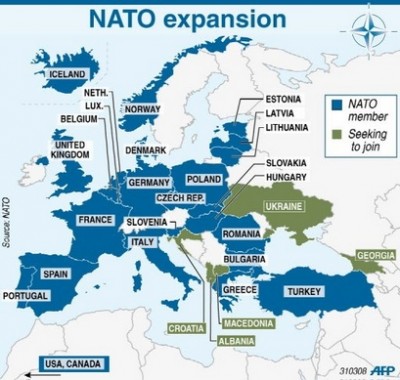US Seeks To Deploy Marines To Norway Amid Escalating Russian Tensions

Norway is debating a “long-standing US wish” to allow American marines to deploy troops in the Scandinavian nation, furthering NATO’s encirclement of Russia.
Norway may allow the United States to deploy up to 300 marines “on a rotational basis” on its soil, advancing the North Atlantic Treaty Organization’s (NATO) long-standing goal of encircling Russia’s border with US-allied military assets.
The marines would be stationed in Vaernes, an air station just outside the Norwegian city of Trondheim – only 100 kilometers from Russia. NATO has claimed that this move is part of a long-standing effort to deter “Russian aggression” despite the fact that Russia has in no way threatened Norway or other countries on its borders. NATO ended cooperation with Russia following the Ukrainian coup of 2014, which led Russia to annex Crimea. According to Norwegian Defense Ministry spokeswoman Ann Kristin Salbuvik, “there is no question of permanent deployment” as the presence of the Marines would be temporary, though no timeline has been specified.

Credit – USMC Life
Not everyone in the Norwegian government was aware of the plan until it was publicly announced last week. Several members of the Foreign Affairs and Defense Committee were kept unaware of the plan, which has allegedly been in the planning stages for quite some time, according to local media. The plan, before being enacted, must first be approved by the Norwegian Parliament, where it faces opposition from several political parties. US officials, however, maintain that 300 US marines in Norway would be “beneficial.” Norway s already stockpiling NATO weapons and, according to some reports, has enough military equipment to support around 15,000 US Marines.
The move will undoubtedly further escalate tensions between Russia and Norway as any presence of US troops in the country would break Norway’s promise not to deploy foreign troops in its territory – a promise it made in 1949. However, the promise was conditional on Norway not feeling threatened. Norway has not publicly announced feeling threatened by Russia or any other country. Meanwhile, NATO has also announced plans to deploy 4,000 more troops to the Baltic region, also on Russia’s border, by next May. According to the commanding officer of NATO’s European forces, Czech Army General Petr Pavel, the troops will “serve as a deterrent and if necessary a fighting force.”
Since the Ukrainian coup of 2014, NATO has overseen a military buildup unprecedented since 1941, when Hitler invaded the Soviet Union. Russia has been on edge regarding the buildup and has threatened to respond numerous time, but neglected to militarize its Western border until relatively recently. The buildup has also coincided with increasingly dangerous developments in US-Russian relations over the Syrian conflict, with each side accusing the other of helping ISIS and needlessly killing civilians. With US-dominated NATO rubbing salt in the wound, it is no small wonder that Russians are preparing for the worst case scenario – a full-scale, global war between NATO and those who oppose its interests.

